Angelfish - Pterophyllum leopoldi
Scientific name: Pterophyllum leopoldi
Common name: Angelfish
Family: Cichlidae
Usual size in fish tanks: 5 - 6 cm (1.97 - 2.36 inch)
014
Recommended pH range: 6.2 - 7.8
Recommended water hardness: 6 - 16°N (107.14 - 285.71ppm)
0°C 32°F30°C 86°F
Recommended temperature range: 21 - 26 °C (69.8 - 78.8°F)
The way how these fish reproduce: Spawning
Where the species comes from: South America
Temperament to its own species: peaceful
Temperament toward other fish species: peaceful
Usual place in the tank: Middle levels
Food and Feeding
Pterophyllum leopoldi, commonly known as Angelfish, are voracious eaters with a diverse diet. In captivity, they thrive on a varied diet that includes high-quality flake or pellet foods as their staple diet. To maintain their health and vibrant colors, it is essential to supplement their diet with live or frozen foods such as bloodworms, brine shrimp, and daphnia. These protein-rich foods not only support their overall well-being but also enhance their natural hunting instincts. Angelfish can be fed once or twice daily, ensuring that they consume all the food within a few minutes to prevent overfeeding and water quality issues.
It's important to note that while Angelfish are eager eaters, they can sometimes exhibit a preference for live foods, especially when kept in a more naturalistic aquarium setup. Providing a balanced diet that combines plant-based and protein-rich foods will ensure they receive the necessary nutrients for growth and development. Incorporating vegetables such as blanched spinach or zucchini occasionally can also provide variety and additional nutrients to their diet.
Origin
Angelfish (Pterophyllum leopoldi) are native to the freshwater rivers and floodplains of South America, particularly within the Amazon Basin. These fish are accustomed to the slow-moving waters of the Amazon River and its tributaries, where they inhabit areas with dense vegetation and submerged roots. This natural habitat is rich in leaf litter and aquatic plants, creating a complex environment that provides ample hiding spots and breeding grounds. Understanding their origin helps aquarists replicate similar conditions in their aquariums, promoting their health and natural behaviors.
Sexing
Sexing Angelfish can be quite challenging due to the subtle differences between males and females. Generally, females tend to have a rounder, fuller body shape, especially when they are carrying eggs. Males may exhibit more pointed dorsal and anal fins and might have a more pronounced nuchal hump on their foreheads. However, these distinctions can be ambiguous and unreliable, especially outside of the breeding season. For those interested in breeding Angelfish, it is recommended to keep a small group of juveniles together and allow them to form natural pairs, as this is often the most reliable way to determine their sexes.
Breeding
Breeding Angelfish in captivity is a rewarding yet intricate process. When ready to spawn, a pair will select a flat surface such as the aquarium glass, a broad plant leaf, or a piece of slate. The chosen site will be meticulously cleaned by both the male and female before spawning begins. During the spawning process, the female will lay a line of eggs on the selected surface, which the male will then fertilize. This cycle is repeated several times until hundreds of eggs are laid. The eggs typically hatch within 48 hours, and the fry become free-swimming approximately a week after hatching. At this stage, they can be fed on newly hatched brine shrimp or specialized fry food to support their growth.
To encourage breeding, provide a calm environment with subdued lighting and a stable temperature within the range of 26-28°C (78.8-82.4°F). Soft, slightly acidic water (pH around 6.5-7.0) mimics their natural breeding conditions. After spawning, the parents may exhibit protective behavior, fanning the eggs and guarding the fry. If you prefer to raise the fry separately, the eggs can be carefully removed and placed in a dedicated fry tank with similar water conditions.
Lifespan
The expected lifespan for Angelfish is typically between 5 to 10 years in a well-maintained aquarium. With optimal care, including a balanced diet, suitable tank conditions, and regular water changes, Angelfish can thrive and live towards the upper end of this range. Some Angelfish have been known to live even longer, especially when provided with a stress-free environment and proper care throughout their lives.
Short Description
Angelfish (Pterophyllum leopoldi) are a popular and visually striking addition to community aquariums. While they are generally peaceful, they can exhibit territorial behavior, particularly during breeding. Due to their tendency to prey on smaller fish, they are best kept with similarly sized tank mates such as Rasboras, larger Tetras, and other peaceful fish that occupy different levels of the aquarium. Their elegant appearance, combined with their relatively peaceful temperament, makes them a favorite among aquarists. However, it's important to monitor their interactions with tank mates, especially in smaller aquariums, to ensure a harmonious community.
Pictures
Bought by aqua-fish.net from jjphoto.dk.






 Thread-finned
Thread-finned 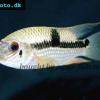 Acara
Acara  Yellow
Yellow  Patrick's
Patrick's  Blue
Blue  Green
Green 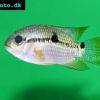 Acara
Acara  White
White  Compressed
Compressed 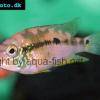 Pastel
Pastel  Midas
Midas  Red
Red  Bluemouth
Bluemouth  False
False 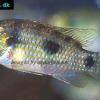 African
African  Agassiz's
Agassiz's  Banded
Banded 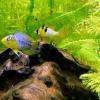 Yellow
Yellow  Cockatoo
Cockatoo  Blue
Blue  Blackstripe
Blackstripe  Highfin
Highfin  Redstripe
Redstripe  Threadfinned
Threadfinned  Macmaster’s
Macmaster’s 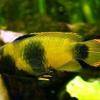 Panda
Panda  Norbert’s
Norbert’s 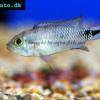 Blue
Blue  Thin-line
Thin-line  Three-striped
Three-striped  Viejita
Viejita 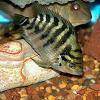 Flier
Flier  Archocentrus
Archocentrus  Convict
Convict  Seven
Seven  Spiny
Spiny  Oscar
Oscar  Sunshine
Sunshine  Chitande
Chitande  Firebird
Firebird  Midnight
Midnight  Lake
Lake  Sunshine
Sunshine  Aulonocara
Aulonocara  Nyasa
Nyasa 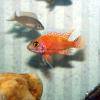 Ruby
Ruby  Grants
Grants  Aulonocranus
Aulonocranus  Chameleon
Chameleon  Benitochromis
Benitochromis  Orinoco
Orinoco  Yellow
Yellow 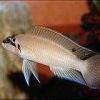 Brichard’s
Brichard’s  Guenther’s
Guenther’s  Southern
Southern  Cichla
Cichla 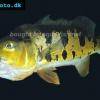 Peacock
Peacock  Chiseltooth
Chiseltooth  Bolivian
Bolivian  Red
Red  Many-pointed
Many-pointed  Jack
Jack  Red
Red  Three
Three 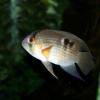 Keyhole
Keyhole  Azureus
Azureus  Red
Red  Jackson’s
Jackson’s  Crenicichla
Crenicichla  Honduran
Honduran  Blue-eye
Blue-eye  Afra
Afra 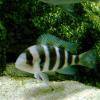 Frontosa
Frontosa  Slender
Slender  Malawi
Malawi  Chequerboard
Chequerboard  Checkerboard
Checkerboard  Malawi
Malawi  Ectodus
Ectodus  Tanganyika
Tanganyika  Canara
Canara  Green
Green  Rostratus
Rostratus  Pearl
Pearl 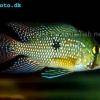 Geophagus
Geophagus  Yellowhump
Yellowhump  Suriname
Suriname  Redhump
Redhump  Red
Red  Dority’s
Dority’s  Argentine
Argentine 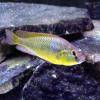 Burton’s
Burton’s  Victoria
Victoria 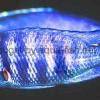 Haplochromis
Haplochromis  Jewel
Jewel  Banded
Banded 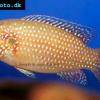 Lifalili
Lifalili  Lowland
Lowland  Texas
Texas  Pantano
Pantano  Severum
Severum  Banded
Banded 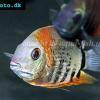 Severum
Severum  Rainbow
Rainbow  Parrot
Parrot  Chocolate
Chocolate  Brown
Brown  Marlieri
Marlieri  Golden
Golden  Striped
Striped  Masked
Masked 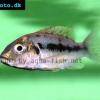 Konye
Konye  Blue
Blue  Trewavas
Trewavas  Electric
Electric  Dwarf
Dwarf  Redbreast
Redbreast  Lamprologus
Lamprologus  Gold
Gold 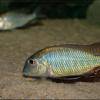 Greenface
Greenface 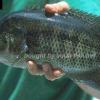 Mayan
Mayan  Aurora
Aurora  Blue
Blue  William’s
William’s 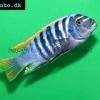 Zebra
Zebra  Malawi
Malawi  Blue
Blue 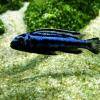 Blue
Blue  Mbuna
Mbuna  Parallel
Parallel  Purple
Purple  Flag
Flag  Bolivian
Bolivian  Ram
Ram  Basket
Basket 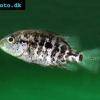 Haitian
Haitian  Zebra
Zebra  Striped
Striped  Neolamprologus
Neolamprologus  Brevis
Brevis  Fairy
Fairy 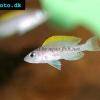 Neolamprologus
Neolamprologus  Cylindricus
Cylindricus  Hecq’s
Hecq’s  Neolamprologus
Neolamprologus  Lemon
Lemon  Mustax
Mustax  Daffodil
Daffodil  Six-bar
Six-bar  Five-bar
Five-bar  Marbled
Marbled 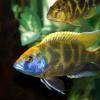 Giraffe
Giraffe  Blue
Blue  Sulphurhead
Sulphurhead  Wolf
Wolf  Jaguar
Jaguar  Blue
Blue  Marakeli
Marakeli  Madagascar
Madagascar  Pinstripe
Pinstripe  Pelmatochromis
Pelmatochromis  Kribensis
Kribensis 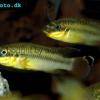 Striped
Striped  Red
Red  Deepwater
Deepwater  Fenestratus
Fenestratus  Nichols’
Nichols’  Southern
Southern  Bumble
Bumble  Demason’s
Demason’s  Slender
Slender  Red
Red  Mbuna
Mbuna  Malawi
Malawi  Kenyi
Kenyi  Powder
Powder  Altum
Altum  Angelfish
Angelfish 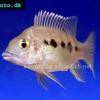 East
East  Juba
Juba  Earth
Earth 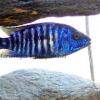 Electric
Electric  Azure
Azure  Lionhead
Lionhead  Discus
Discus  Blue
Blue  Red
Red  Zebra
Zebra  Brichard’s
Brichard’s  Blue
Blue  Firemouth
Firemouth  Zebra
Zebra  Yellow
Yellow  Blue
Blue  Dwarf
Dwarf  Blunthead
Blunthead 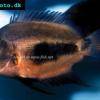 The
The  White
White  Twoband
Twoband  Fenestratus
Fenestratus  Window
Window  Tailbar
Tailbar  Black
Black  Redhead
Redhead 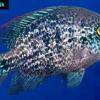 Oaxaca
Oaxaca  Xenotilapia
Xenotilapia